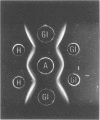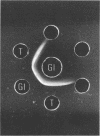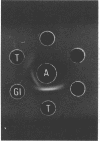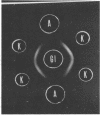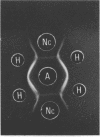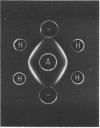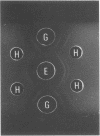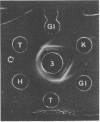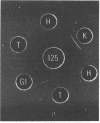Abstract
A newly developed latex agglutination (LA) test and a modified immunodiffusion (ID) test were evaluated. The antigen used was a homogenate of Candida albicans. A total of 167 antisera were employed in the evaluation. They included 36 sera from clinically well persons; 78 from patients with various clinical forms of candidiasis; 52 from patients with proven cases of aspergillosis, blastomycosis, coccidioidomycosis, cryptococcosis, histoplasmosis, nocardiosis, paracoccidioidomycosis, sporotrichosis, and tuberculosis; and one serum from a patient with toruloposis. Use of the LA test in conjunction with the ID test permitted the detection of more than 90% of 43 proven candidiasis cases. Of all the heterologous cases and normal human sera tested, LA reactions were noted with 3 of 10 cryptococcosis case specimens, 1 of 9 tuberculosis case specimens, and with the torulopsemia case serum. In contrast, the only heterologous serum reactive in the ID test was that from the patient with torulopsemia. Torulopsis glabrata and C. albicans antisera gave identical reactions in LA and ID tests with T. glabrata or C. albicans antigens. ID tests with selected antigens, however, permitted differentiation of rabbit and human T. glabrata antibody from that of C. albicans antibody. Six different precipitins were recognized with the C. albicans antigens. The occurrence of multiple precipitin lines and high LA titers was suggestive of severe candidiasis. The LA test, in contrast to the ID test, appeared to have prognostic value. Together, the LA and ID tests provided a simple, rapid, and accurate means of detecting and monitoring infections by species of Candida.
Full text
PDF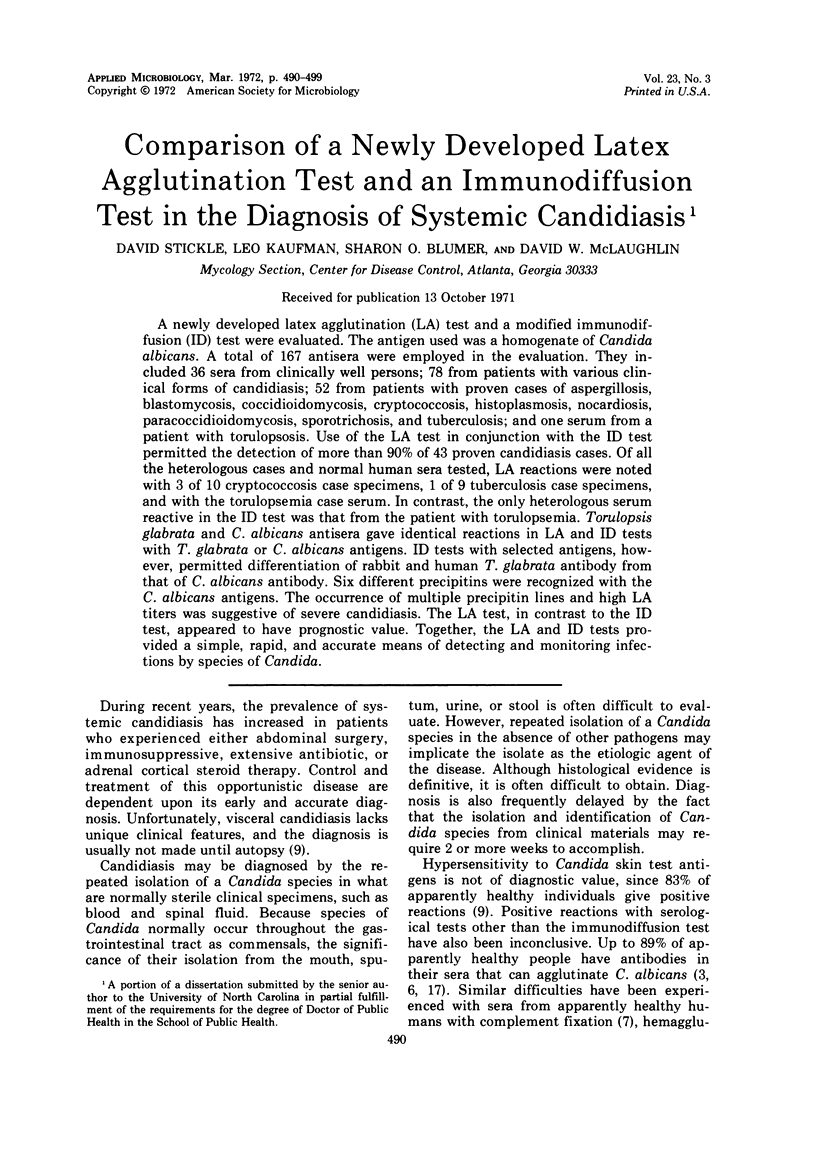
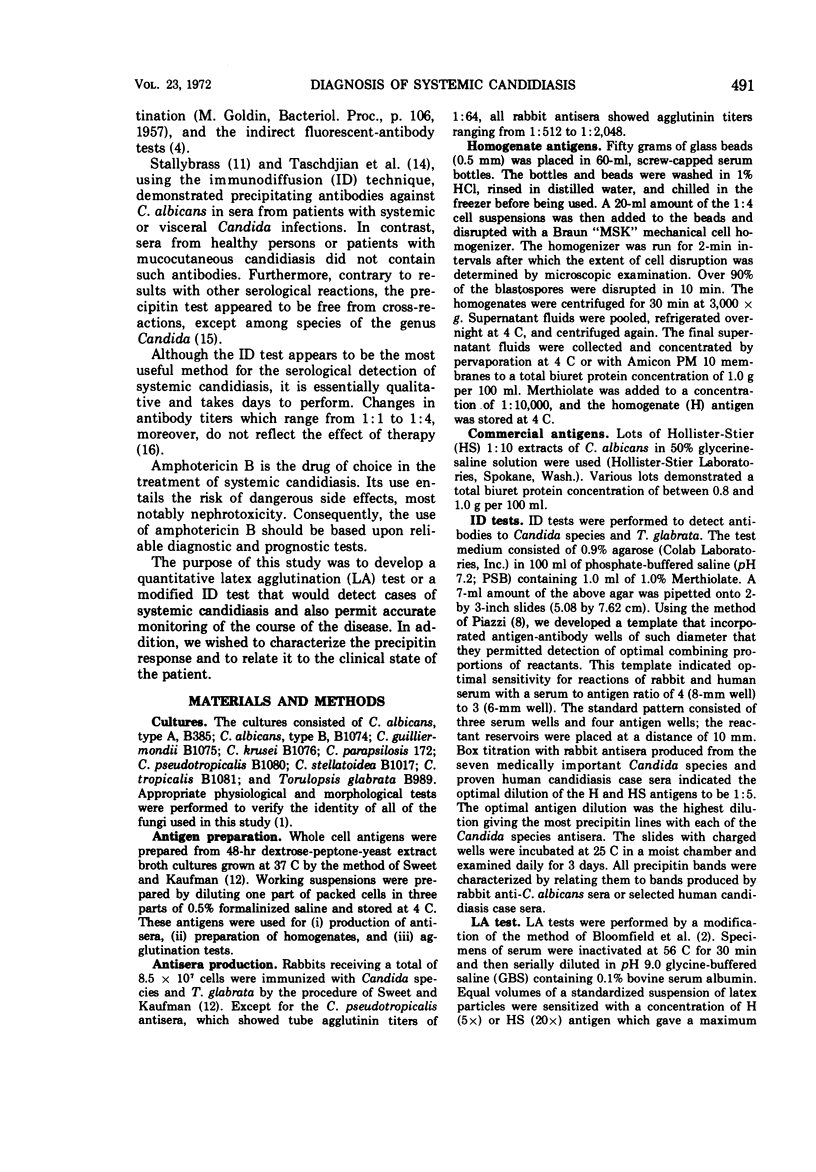
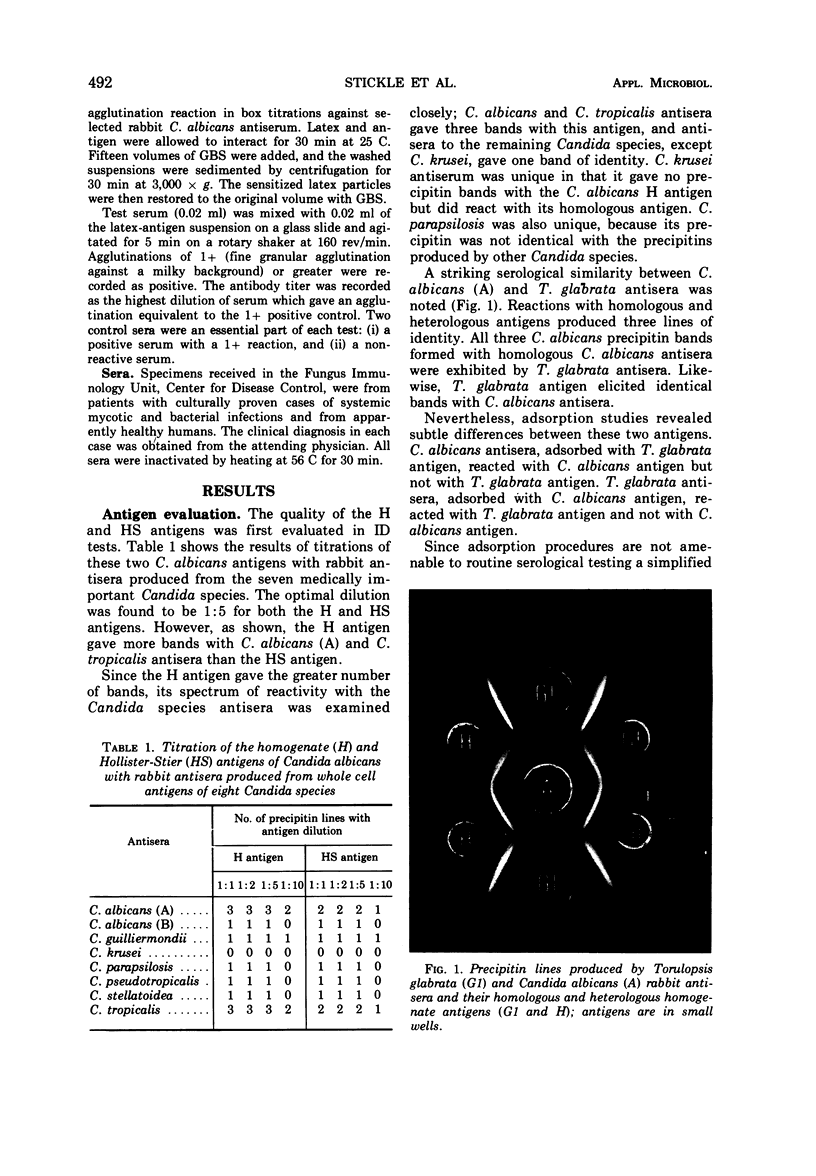
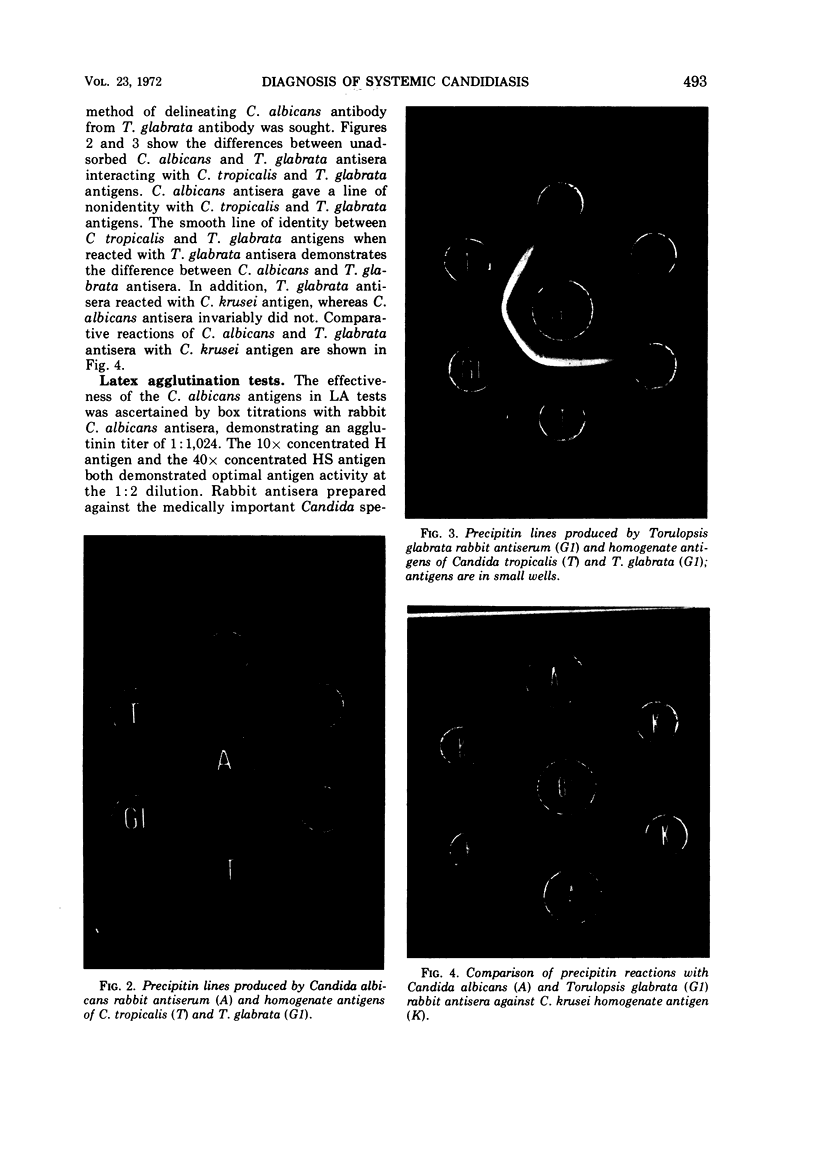
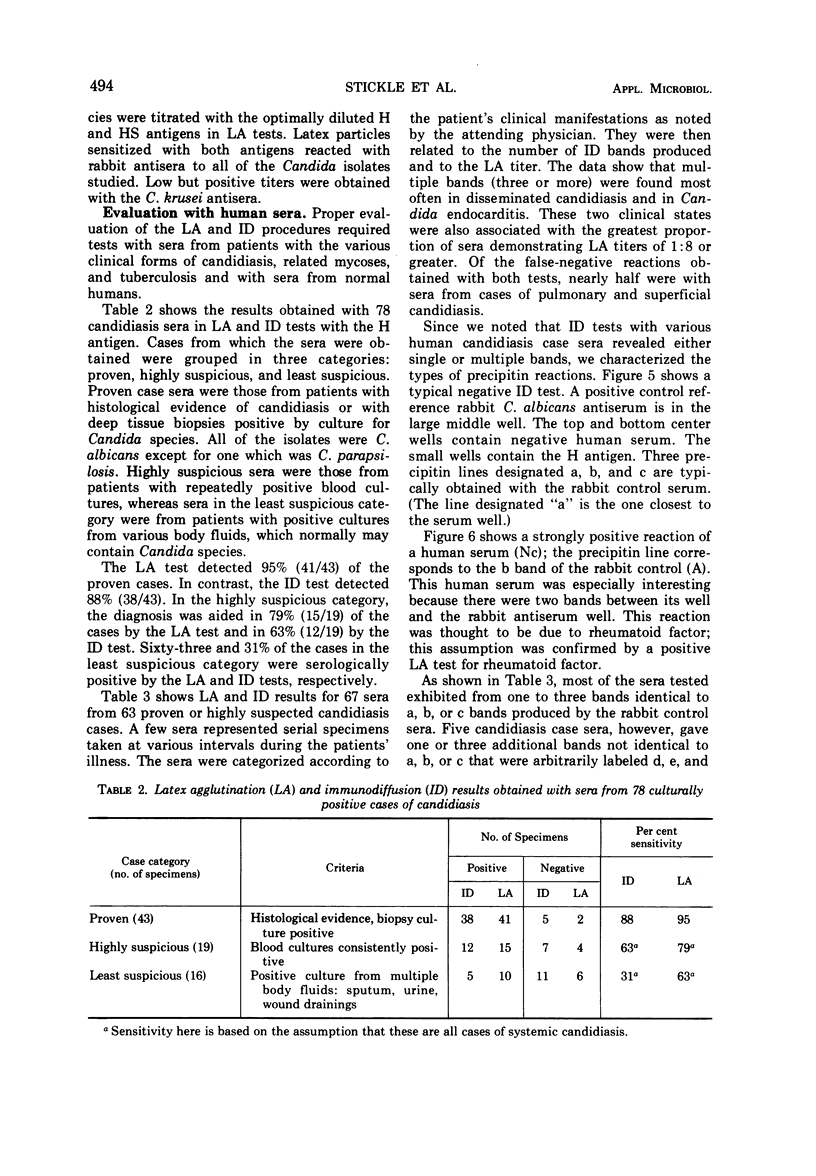
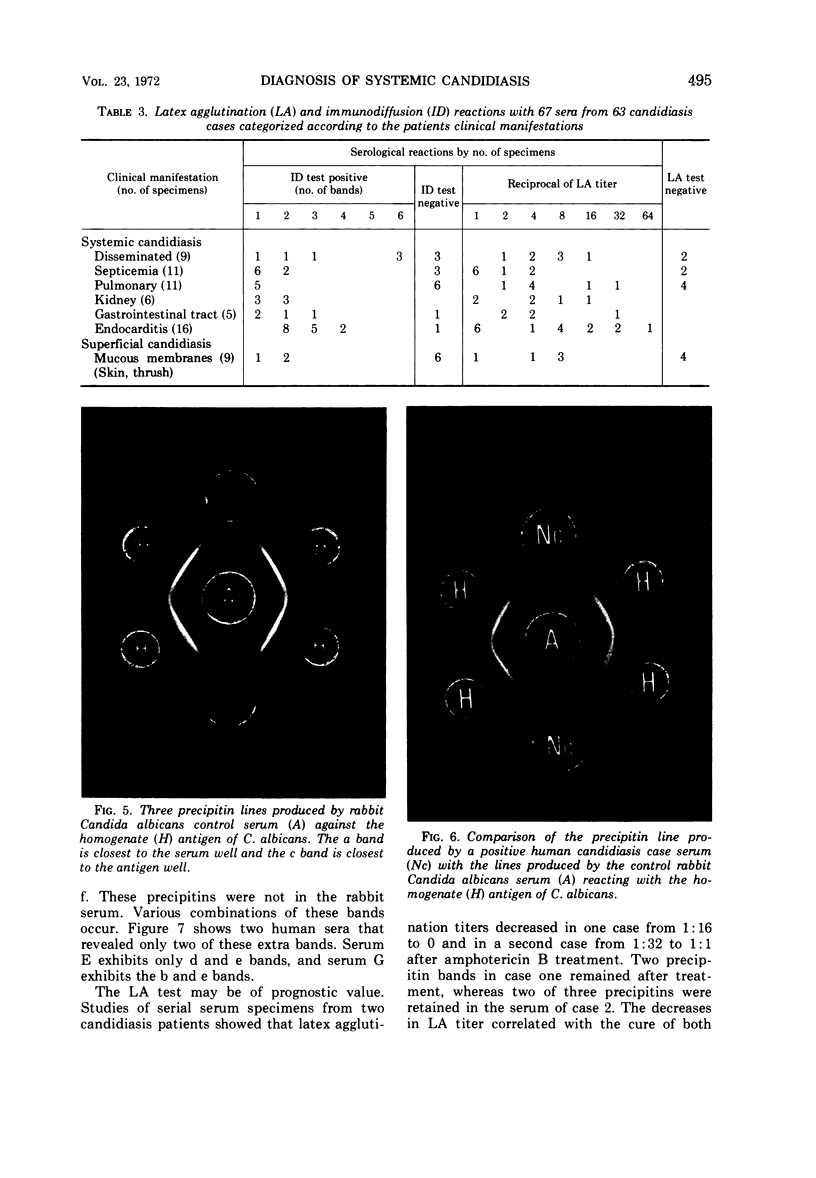
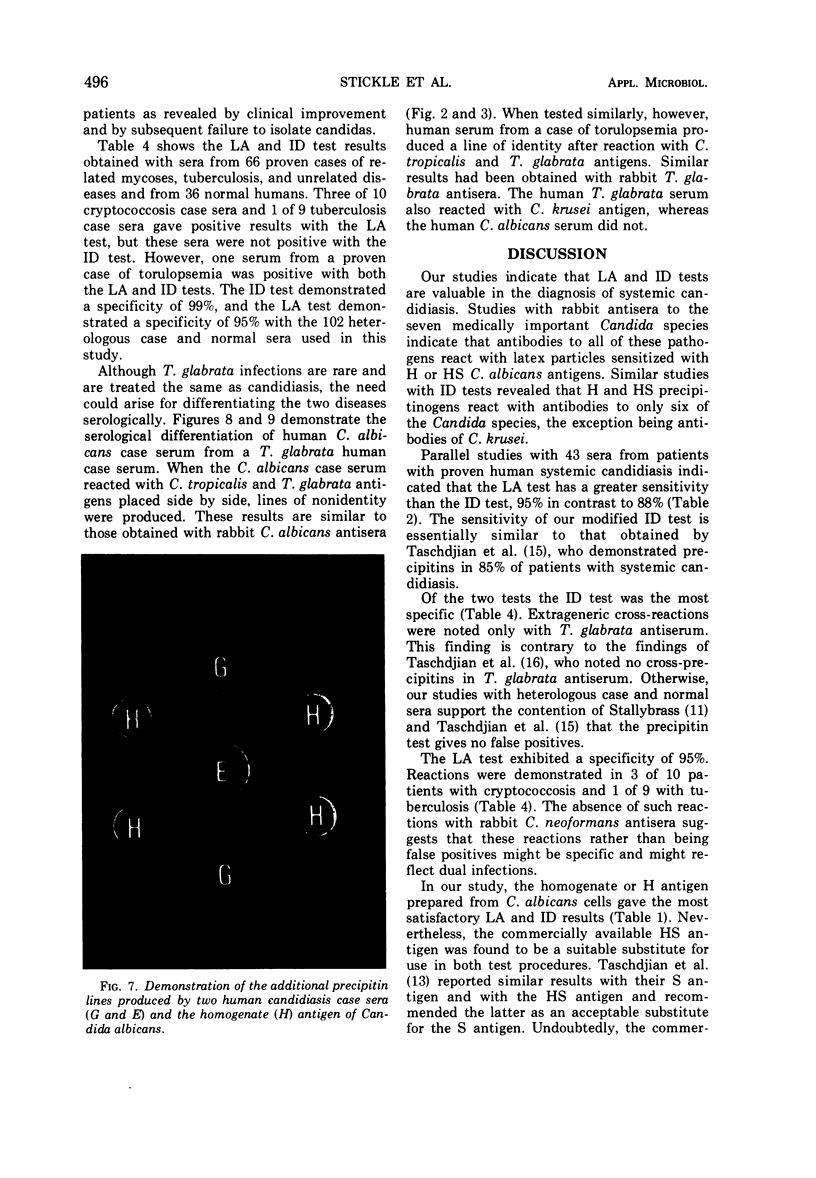
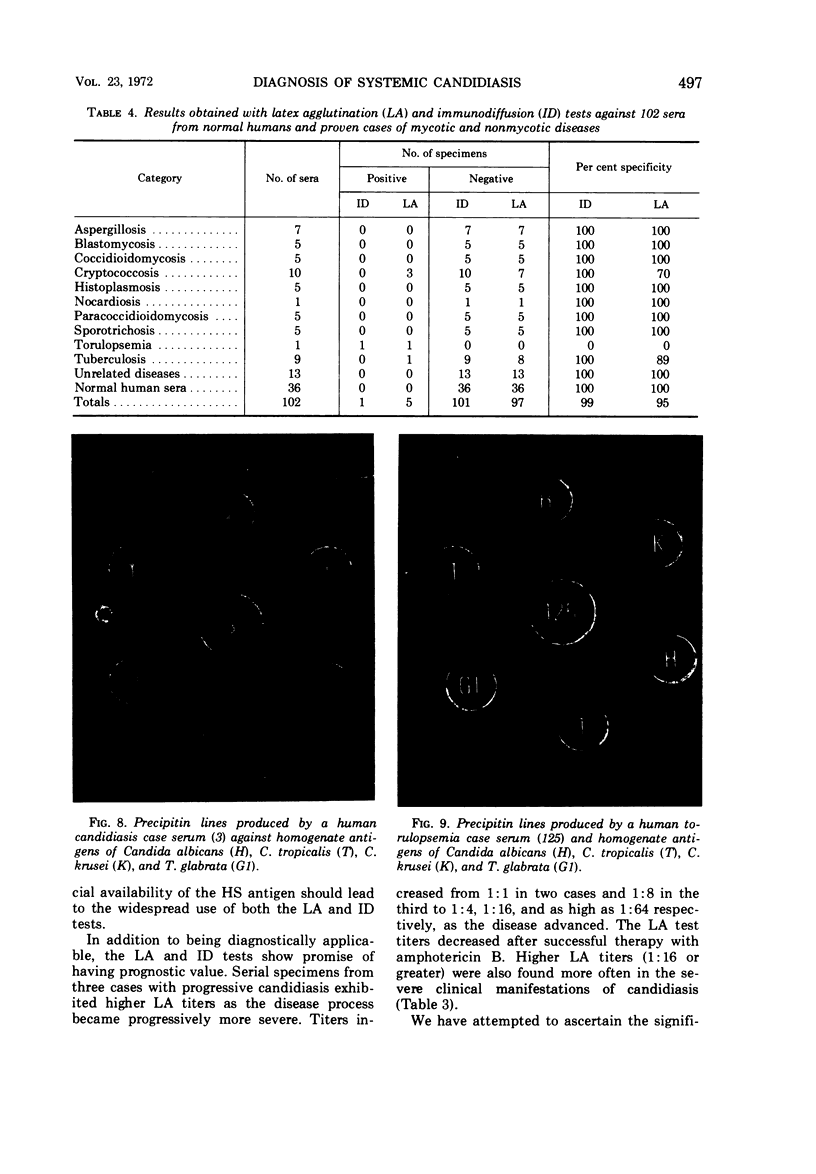
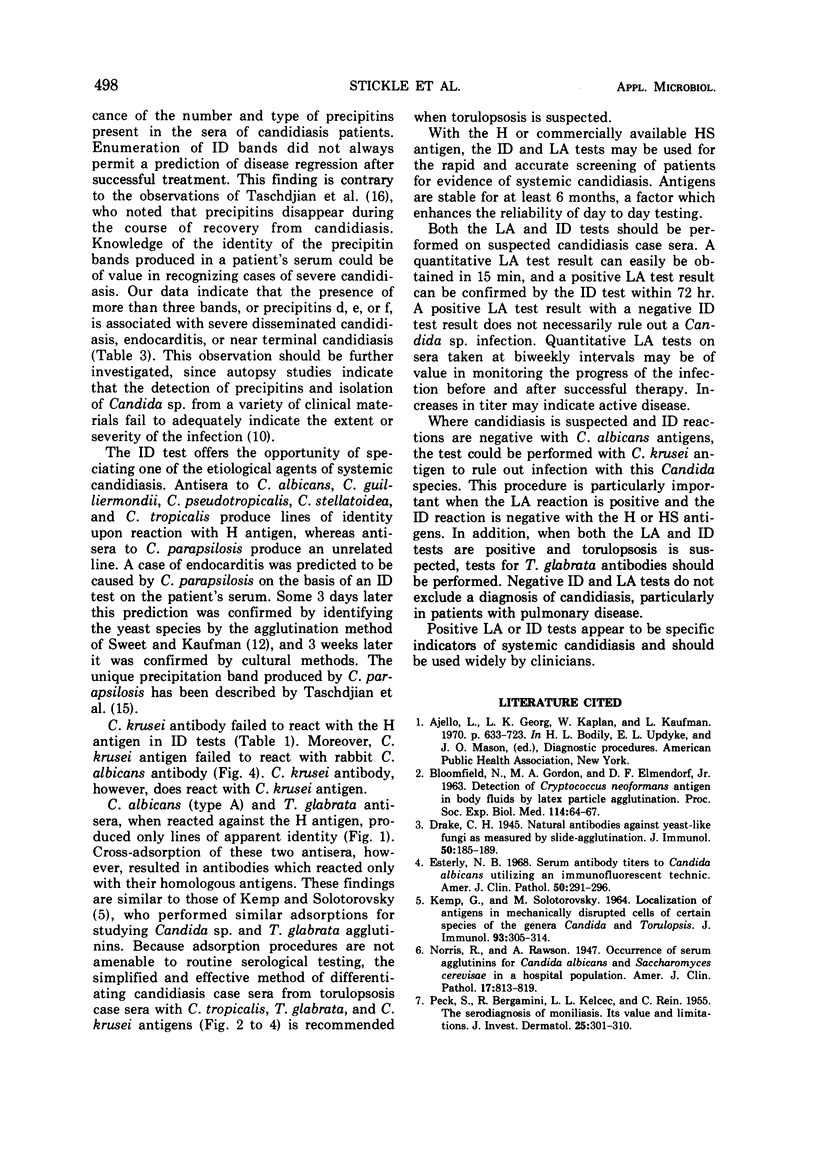
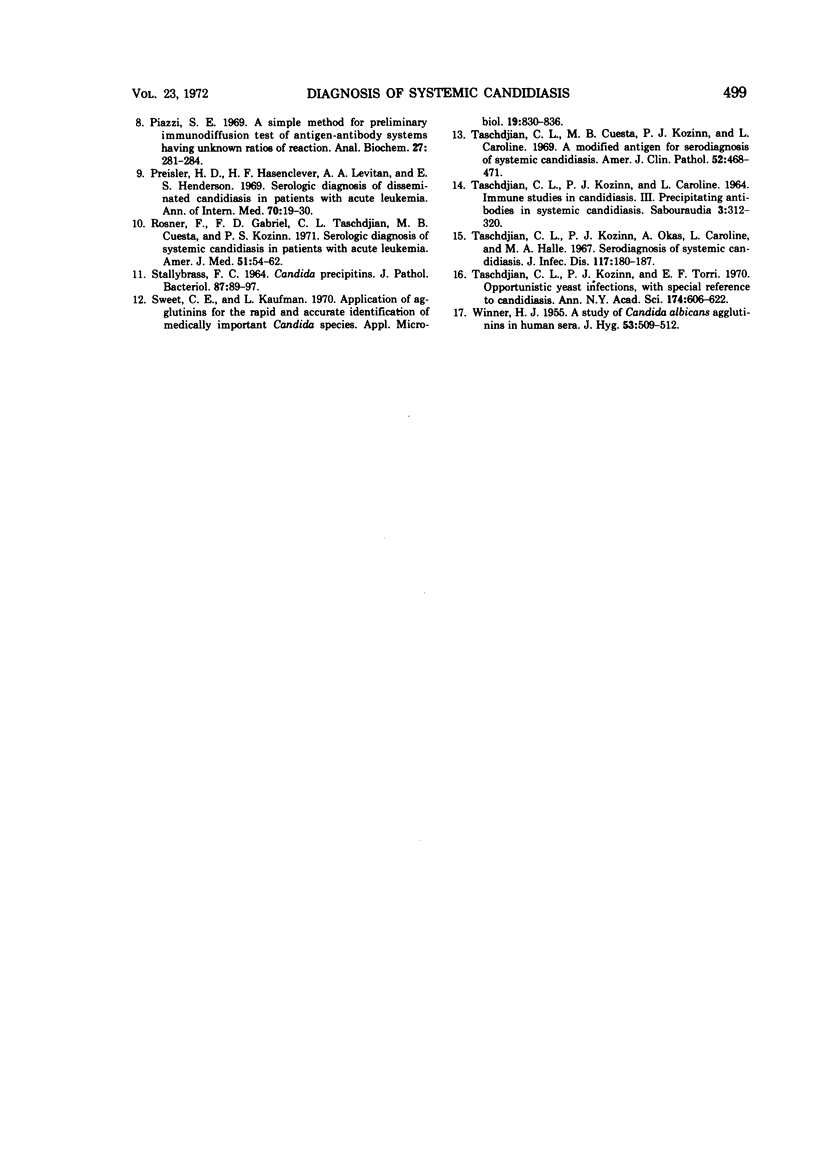
Images in this article
Selected References
These references are in PubMed. This may not be the complete list of references from this article.
- BLOOMFIELD N., GORDON M. A., ELMENDORF D. F., Jr DETECTION OF CRYPTOCOCCUS NEOFORMANS ANTIGEN IN BODY FLUIDS BY LATEX PARTICLE AGGLUTINATION. Proc Soc Exp Biol Med. 1963 Oct;114:64–67. doi: 10.3181/00379727-114-28586. [DOI] [PubMed] [Google Scholar]
- Esterly N. B. Serum antibody titers to Candida albicans utilizing an immunofluorescent technic. Am J Clin Pathol. 1968 Sep;50(3):291–296. doi: 10.1093/ajcp/50.3.291. [DOI] [PubMed] [Google Scholar]
- KEMP G., SOLOTOROVSKY M. LOCALIZATION OF ANTIGENS IN MECHANICALLY DISRUPTED CELLS OF CERTAIN SPECIES OF THE GENERA CANDIDA AND TORULOPSIS. J Immunol. 1964 Aug;93:305–314. [PubMed] [Google Scholar]
- PECK S. M., BERGAMINI R., KELCEC L. C., REIN C. R. The serodiagnosis of moniliasis; its value and limitations. J Invest Dermatol. 1955 Nov;25(5):301–310. doi: 10.1038/jid.1955.134. [DOI] [PubMed] [Google Scholar]
- Piazzi S. E. A simple method for preliminary immunodiffusion test of antigen-antibody systems having unknown ratios of reaction. Anal Biochem. 1969 Feb;27(2):281–284. doi: 10.1016/0003-2697(69)90033-5. [DOI] [PubMed] [Google Scholar]
- Preisler H. D., Hasenclever H. F., Levitan A. A., Henderson E. S. Serologic diagnosis of disseminated candidiasis in patients with acute leukemia. Ann Intern Med. 1969 Jan;70(1):19–30. doi: 10.7326/0003-4819-70-1-19. [DOI] [PubMed] [Google Scholar]
- Rosener F., Gabriel F. D., Taschdjian C., Cuesta M. B., Kozinn P. J. Serologic diagnosis of systemic candidiasis in patients with acute leukemia. Am J Med. 1971 Jul;51(1):54–62. doi: 10.1016/0002-9343(71)90323-8. [DOI] [PubMed] [Google Scholar]
- STALLYBRASS F. C. CANDIDA PRECIPITINS. J Pathol Bacteriol. 1964 Jan;87:89–97. doi: 10.1002/path.1700870113. [DOI] [PubMed] [Google Scholar]
- Sweet C. E., Kaufman L. Application of agglutinins for the rapid and accurate identification of medically important Candida species. Appl Microbiol. 1970 May;19(5):830–836. doi: 10.1128/am.19.5.830-836.1970. [DOI] [PMC free article] [PubMed] [Google Scholar]
- Taschdjian C. L., Cuesta M. B., Kozinn P. J., Caroline L. A modified antigen for serodiagnosis of systemic candidiasis. Am J Clin Pathol. 1969 Oct;52(4):468–472. doi: 10.1093/ajcp/52.4.468. [DOI] [PubMed] [Google Scholar]
- Taschdjian C. L., Kozinn P. J., Caroline L. Immune studies in candidiasis. 3. Precipitating antibodies in systemic candidiasis. Sabouraudia. 1964 Oct;3(4):312–320. doi: 10.1080/00362176485190551. [DOI] [PubMed] [Google Scholar]
- Taschdjian C. L., Kozinn P. J., Okas A., Caroline L., Halle M. A. Serodiagnosis of systemic candidiasis. J Infect Dis. 1967 Apr;117(2):180–187. doi: 10.1093/infdis/117.2.180. [DOI] [PubMed] [Google Scholar]
- Taschdjian C. L., Kozinn P. J., Toni E. F. Opportunistic yeast infections, with special reference to candidiasis. Ann N Y Acad Sci. 1970 Oct 30;174(2):606–622. doi: 10.1111/j.1749-6632.1970.tb45586.x. [DOI] [PubMed] [Google Scholar]
- WINNER H. I. A study of Candida albicans agglutinins in human sera. J Hyg (Lond) 1955 Dec;53(4):509–512. doi: 10.1017/s0022172400001005. [DOI] [PMC free article] [PubMed] [Google Scholar]



